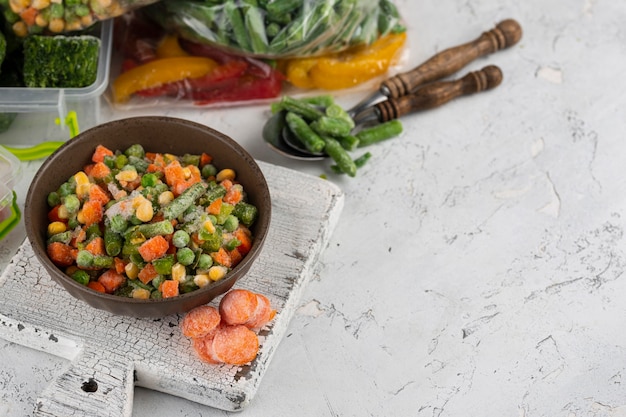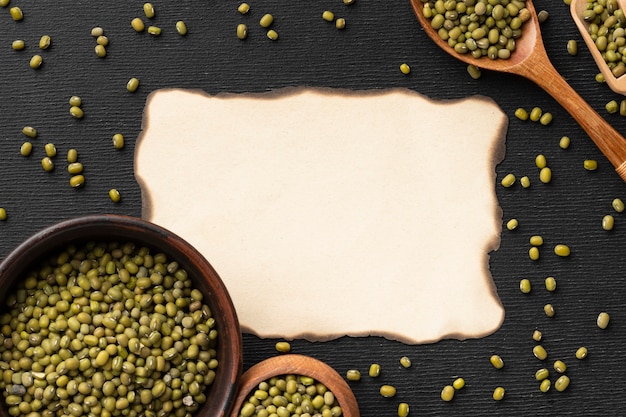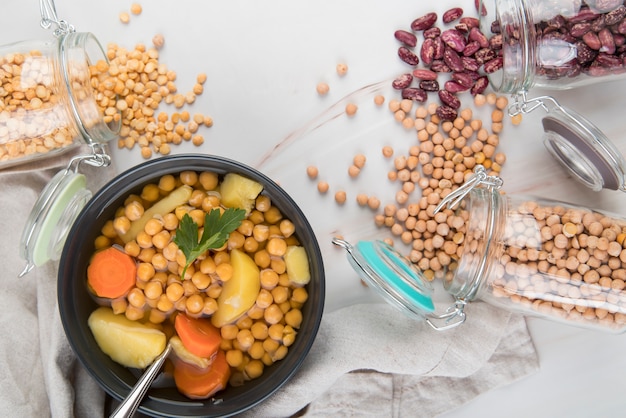Right, let's talk fava beans. These little green gems have a charm that's almost addictive, a nutty sweetness and creamy texture that can elevate any dish. But, let's be real, fava beans can be a bit of a pain to get right. They require a bit of work, but trust me, the effort is totally worth it. The payoff is incredible - a burst of flavor and a dish that truly sings.
So, grab your apron, get your finest knives, and let's embark on this culinary journey together. We'll cover everything from finding the perfect beans to creating a feast worthy of a Michelin star (well, maybe not quite, but close!). I'll share my personal tips and tricks, and we'll explore the fascinating history and cultural significance of these beans. Ready? Let's go!
(Part 1) Finding Your Fava Beans: The Hunt Begins

The first step is finding those perfect fava beans. If you're lucky enough to have a garden, you might be growing your own (lucky you!). But for the rest of us, it's a market adventure. I always head to my local farmers' market for the best selection - those vibrant green pods bursting with plump, juicy beans are a sight to behold. If you don't have a farmers' market nearby, try your local greengrocer or even the supermarket. Just be sure to check those beans over carefully – you want them to be firm and bright green, with no signs of yellowing or browning. And don't forget to give them a sniff! They should smell fresh and earthy, with none of that musty, off-putting scent. Remember, you'll want to use your fava beans within a few days of buying them - these beauties don't have the longest shelf life.
Choosing the Right Beans: Picking the Winners
Think of choosing fava beans like picking a perfect ripe avocado. You want them to be firm and ready to shine! Here are some key things to look for:
- Firmness: Fava beans should feel firm and plump, not soft or mushy. When you press gently on them, you want them to have a bit of a spring back.
- Colour: They should be a bright, vibrant green. Any yellowing or browning is a sign they're past their prime.
- Smell: Fresh fava beans have a fresh, earthy aroma, like springtime in a pod! If they smell musty or off, it's a sign they've gone bad.
Now, I know what you're thinking – a pound of fava beans seems like a lot, right? Trust me, you'll go through it quickly. Fava beans are just that good, and you'll want to savor every delicious bite.
(Part 2) Preparing Your Fava Beans: A Little Work, A Lot of Reward

Okay, you've got your beautiful beans. Now, it's time to get them ready for cooking. This is the part where things get a bit fiddly. It's a little bit of work, I won't lie, but it's worth it. The result is a creamy, nutty bean that melts in your mouth, making all the effort worth it. Think of it as a little mindfulness exercise, a chance to be present in the moment.
Step 1: The Big De-Podding: Freeing the Beans
First, you'll need to free those beans from their pods. This is where a sharp knife comes in handy – slice down the pod, don't force the beans out. You want to avoid squishing those precious beans. Now, I've got to tell you, this can be a bit tedious. You'll be surprised at how many pods there are in a pound of fava beans! But as you're de-podding, take a moment to smell the fresh, earthy scent. It's like a little reminder of spring and fresh growth.
Step 2: The Bean Removal: Shedding the Skin
Once your beans are out of their pods, it's time to remove the outer skin. This is the part that some folks find a bit fiddly, but I actually find it quite relaxing. It's like a little bit of meditation – a chance to clear your mind while you're busy with your hands. Plus, it's a great opportunity to listen to your favorite podcast or catch up on the news.
Here's the process for removing the skins:
- Blanching: First, you're going to blanch the beans. This involves cooking them in boiling water for a short time, which helps to loosen the outer skin. Simply add your beans to a pot of boiling water for about 30-60 seconds, then drain them and plunge them into ice water to stop the cooking process.
- Removing the Skins: Once they're cool, the skins will slip off easily. You can use your fingers, or if you're feeling fancy, a small paring knife.
Once the skins are off, your fava beans are ready to cook! You've done the hard work, and the best part is about to begin.
(Part 3) Cooking Your Fava Beans: From Simple to Spectacular

Now, we're getting to the fun part – cooking your fava beans! The beauty of these beans is their versatility. You can cook them in a variety of ways, from simple and straightforward to sophisticated and show-stopping.
Simple Steaming: Unlocking Pure Flavor
For the ultimate, clean flavor, steaming is the way to go. It's super easy – just add your beans to a steamer basket and place it over a pot of boiling water. Steam for about 5-7 minutes, or until the beans are tender. Season with a pinch of salt and a drizzle of olive oil, and you've got yourself a delicious side dish. You could even add a touch of fresh herbs like mint or parsley for a more complex flavor.
Adding Flavor: Sauteed with Garlic and Herbs: A Taste of Italy
If you want to add a bit more oomph, try sautéing your beans with garlic and herbs. It's like a little taste of Italy right in your kitchen. Simply heat some olive oil in a pan over medium heat, add your garlic, and cook until fragrant. Then, add your beans, salt, pepper, and your favorite herbs. I love using thyme or rosemary. Cook for a few minutes, until the beans are heated through and the flavors have melded. Serve this with some crusty bread and a glass of chilled wine, and you've got yourself a perfect little dinner.
The Ultimate comfort food: Creamy Fava Bean Dip: A Crowd-Pleaser
Now, if you're really looking to impress, make a creamy fava bean dip. This is a real crowd-pleaser and perfect for parties or picnics. It's like a warm hug in a bowl. Here's what you'll need:
- 1 pound fava beans, blanched and skinned
- 1/2 cup olive oil
- 2 cloves garlic, minced
- 1/4 cup lemon juice
- 1/4 cup chopped fresh parsley
- Salt and pepper to taste
Just combine all the ingredients in a food processor and blend until smooth. You can adjust the consistency by adding a bit more olive oil or lemon juice if needed. This dip is delicious with crackers, crudités, or even as a spread for sandwiches.
(Part 4) Beyond the Basics: Experimenting with Fava Beans: A World of Flavor
Now, we've covered the basics, but don't be afraid to experiment! Fava beans are incredibly versatile. They can be incorporated into so many different dishes, adding a unique and delicious twist.
Fava bean salad: A Summertime Delight
A fava bean salad is a perfect addition to any summer barbecue. It's fresh, light, and full of flavor. Combine blanched and skinned beans with your favorite vegetables, such as tomatoes, cucumbers, and onions. Toss with a light vinaigrette, and you've got yourself a delicious salad. You could even add some crumbled feta cheese or toasted pine nuts for a little extra crunch.
Fava Bean Risotto: A Hearty and Flavorful Dish
If you're feeling a little more adventurous, try making a fava bean risotto. Just replace some of the rice with cooked fava beans. It adds a unique flavor and texture, and a touch of elegance to your meal. You can also incorporate fava beans into other Italian dishes like pasta sauces or soups.
Fava Bean Pesto: A Taste of the Mediterranean
Want to add a touch of the Mediterranean to your dishes? Try making a fava bean pesto. It's vibrant and flavorful, and it adds a delicious twist to any meal. Just combine blanched and skinned fava beans with basil, pine nuts, garlic, and Parmesan cheese in a food processor. This pesto is delicious with pasta, grilled chicken, or even just as a spread on bread.
(Part 5) Fava Beans in History and Culture: A Journey Through Time
Fava beans have a long and fascinating history, dating back to ancient Egypt and the Middle East. They were considered a staple food in these regions, and their presence can be traced back to ancient rituals and beliefs. They were even thought to have magical properties!
Ancient Uses: Fava Beans in Ancient Civilizations
In ancient Egypt, fava beans were used in the mummification process, and they were considered a sacred offering to the gods. They were also believed to have protective properties against evil spirits.
A Mediterranean Staple: Fava Beans in Mediterranean Cuisine
Fava beans are still a staple food in many Mediterranean countries, where they are used in a wide variety of dishes. They are particularly popular in Italy, where they are used in dishes like "fava bean salad" and "fava bean risotto."
The Fava Bean and its Symbolism: Meaning and Tradition
The fava bean has also been used as a symbol in various cultures. In some traditions, it represents good luck, fertility, and prosperity. It's no wonder this humble bean has such a rich and diverse history!
(Part 6) Beyond the Kitchen: The Benefits of Fava Beans: A nutritional powerhouse
But fava beans are more than just a delicious ingredient. They're actually good for you too! They're a great source of fiber, protein, and iron, and they're low in calories. They also contain a variety of vitamins and minerals, including folate, vitamin C, and potassium.
Nutritional Benefits: A Closer Look
Here's a closer look at some of the health benefits of fava beans:
- High in Fiber: Fava beans are a good source of fiber, which is essential for maintaining a healthy digestive system. Fiber can help prevent constipation, lower cholesterol levels, and regulate blood sugar.
- Packed with Protein: They're also a decent source of protein, which is important for building and repairing tissues, and keeping your body fueled.
- A Great Source of Iron: If you're struggling to get enough iron, fava beans could be your new best friend. They are a good source of iron, which is essential for carrying oxygen throughout your body.
- Rich in Vitamins and Minerals: Fava beans also contain a variety of vitamins and minerals, including folate, vitamin C, and potassium. Folate is important for cell growth and development, vitamin C supports the immune system, and potassium helps regulate blood pressure.
So, next time you're looking for a healthy and delicious food to add to your diet, reach for those fava beans!
(Part 7) Fava Beans and Favism: A Word of Caution: Understanding the Risks
Now, here's a bit of a cautionary note. Fava beans contain a substance called vicine, which can trigger a condition called favism. This condition can cause serious health problems, including anemia, kidney failure, and even death. It's particularly important if you are of Mediterranean descent, as favism is more common in people with certain genetic backgrounds.
What is Favism? A Genetic Condition
Favism is a genetic disorder that causes a deficiency in the enzyme glucose-6-phosphate dehydrogenase (G6PD). This enzyme is important for protecting red blood cells from damage. If someone with G6PD deficiency consumes fava beans, the vicine in the beans can trigger a breakdown of red blood cells, leading to anemia and other complications.
Symptoms of Favism: Recognizing the Signs
The symptoms of favism can vary depending on the severity of the condition. Some common symptoms include:
- Fatigue
- Pale skin
- Yellowing of the skin and eyes (jaundice)
- Dark urine
- Swelling
- Pain in the abdomen
Prevention is Key: Staying Safe
If you have a family history of favism, or if you've been diagnosed with G6PD deficiency, it's important to avoid consuming fava beans altogether. If you're unsure, it's best to speak to your doctor. They can help you determine if you're at risk and provide advice on how to stay safe.
(Part 8) FAQs About Fava Beans: Common Questions Answered
1. How do I know if my fava beans are fresh?
Fresh fava beans should be firm and bright green. They should also have a fresh, earthy smell. If they're soft, mushy, or have a musty smell, they're likely not fresh. You should also check for any signs of browning or yellowing, which can indicate that they're starting to spoil.
2. How long can I store fava beans?
Fresh fava beans don't have a very long shelf life. They're best used within a few days of purchase. If you need to store them for a little longer, keep them in the refrigerator, but they'll start to lose their freshness.
3. What can I do with leftover fava beans?
Leftover cooked fava beans can be used in a variety of dishes. You can add them to salads, soups, stews, or even make a delicious fava bean dip. You can also freeze them for later use.
4. What are some substitutes for fava beans?
If you can't find fresh fava beans, you can substitute them with other beans, such as broad beans or peas. They won't have the same flavor, but they'll work in a pinch.
5. Is it safe to eat fava beans raw?
It's not recommended to eat fava beans raw. They contain a substance called vicine, which can be toxic if consumed in large quantities. Blanching and removing the skins reduces the levels of vicine, making them safe to eat.
I hope this guide has given you all the information you need to cook fava beans like a pro. So, go forth, my friend, and unleash your inner culinary artist. Experiment, have fun, and enjoy the deliciousness of this truly unique bean.
Everyone is watching

How to Cook Frozen Lobster Tails Perfectly: A Step-by-Step Guide
RecipesLobster. Just the word conjures up images of lavish meals, special occasions, and a taste of luxury. But let's...

Pigs in a Blanket Cooking Time: How Long to Bake for Perfect Results
RecipesAh, pigs in a blanket. Just the name conjures up images of those delightful little parcels of crispy pastry en...

Pork Fillet Cooking Time: How Long to Cook It Perfectly
RecipesPork fillet, or tenderloin as it's sometimes called, is a real favourite in our house. It's so versatile, and...

The Ultimate Guide to Tender, Juicy Pulled Pork
RecipesRight, let's talk pulled pork. It's one of those dishes that just screams "comfort food," doesn't it? I mean...

The Ultimate Guide to Cooking Sweet Potatoes: From Roasting to Mashing
RecipesSweet potatoes. Just the name conjures up images of warm, comforting dishes, bursts of vibrant color, and a to...
